artemis
Latest
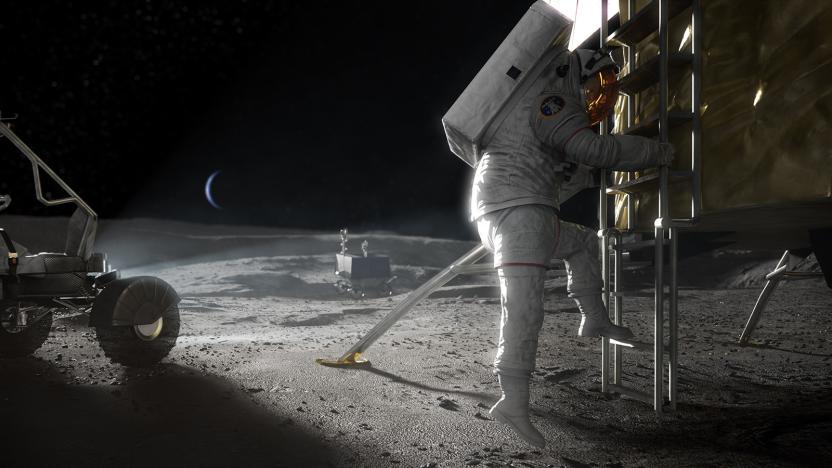
NASA names the astronauts eligible for early Artemis Moon missions
NASA has named the 18 astronauts eligible for Artemis' first crewed Moon missions, and they include both veterans and newcomers.
Jon Fingas12.10.2020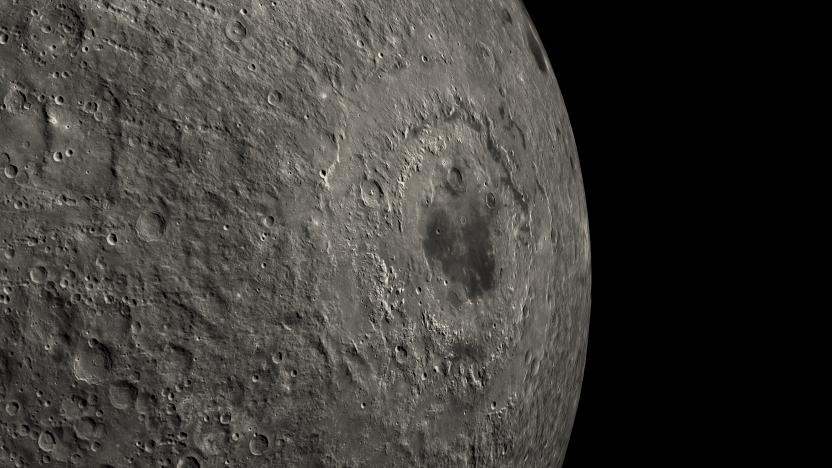
NASA confirms presence of water on sunlit surfaces of the Moon
Astronomers have long been aware of water ice present on the surface of the Moon, but it had only ever been discovered in deep, perpetually shadowed impact craters at its poles.
Andrew Tarantola10.26.2020
NASA taps Nokia to bring LTE to the Moon
LTE service could be coming to the Moon.
Igor Bonifacic10.16.2020
NASA wants ideas for keeping Moon missions powered in the dark
NASA is crowdsourcing ideas for energy systems that would keep Moon missions powered, even in the dark.
Jon Fingas09.27.2020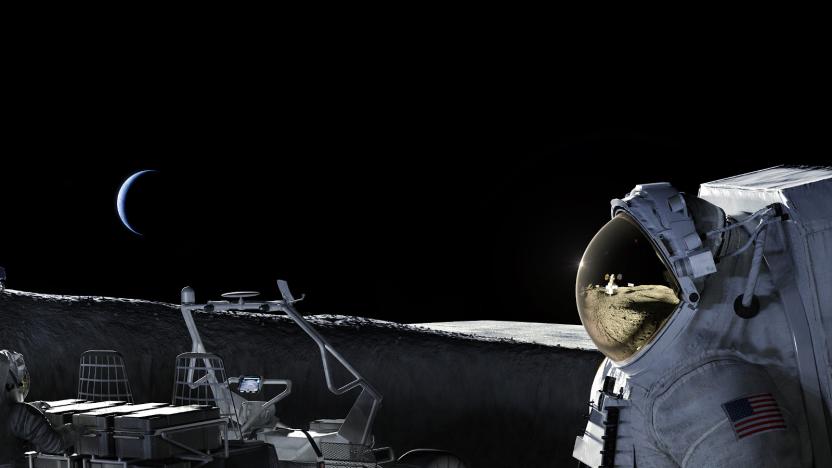
NASA outlines how it will take humanity back to the Moon in 2024
When NASA officially announced the Artemis program last year, it revealed its plans to land the next man and the first woman on the Moon in 2024. Now, the agency has published the Artemis Plan, which details (PDF) how it would take humanity back to the Moon in four years’ time. NASA Administrator Jim Bridenstine said the agency has “solidified more of [its] exploration plans in recent months” and has “continued to refine [its] budget and architecture.”
Mariella Moon09.22.2020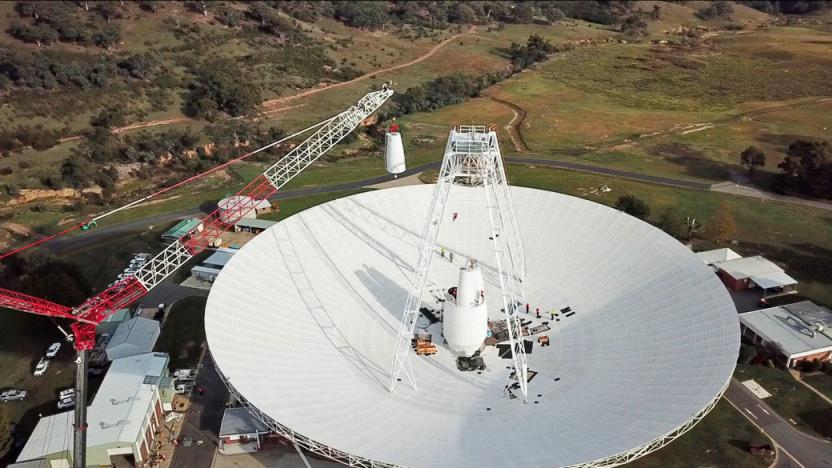
NASA upgrades Australia’s Deep Space Station for future missions to Mars
NASA is in the midst of upgrading Deep Space Station 43 — one of its Deep Space Network’s largest antennas located in Canberra, Australia — to prepare for future missions. The agency’s Deep Space Network is a collection of dishes that make communication with robotic spacecraft possible, and DSS 43 is the only one capable of sending commands to Voyager 2. The agency shut DSS 43 down in early March to equip it with a new X-band frequency cone, which will give it a powerful state-of-the-art transmitter system and highly sensitive receivers.
Mariella Moon07.10.2020
NASA will fund six more Artemis missions as it plans return to the moon
NASA has started preparing for the possibility of launching six more Artemis missions on top of the three it has already confirmed. The space agency has revealed that it has agreed to “provide initial funding and authorization to Northrop Grumman to order long-lead items” for the construction of twin boosters for the next six Space Launch System (SLS) flights. The SLS is slated to become become NASA’s most powerful rocket yet, designed to enable human exploration beyond the Lower Earth Orbit.
Mariella Moon07.01.2020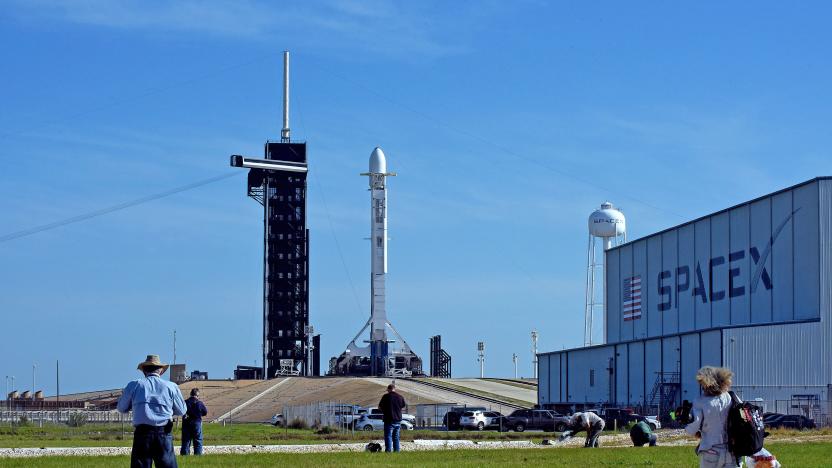
Is going to space truly essential during a pandemic?
That’s good, since interruptions in space are risky. It's been imbued into space since the first moon landing, in 1969. Last month, The Verge reported that Blue Origin was making employees prioritize a space tourism project over the Department of Defense-funded work that made it an essential business.
Ingrid Burrington05.20.2020
NASA crowdsourcing helps build a better Moon digging robot
NASA has picked the winners from a challenge that asked the public to improve its Moon digging robot.
Jon Fingas05.17.2020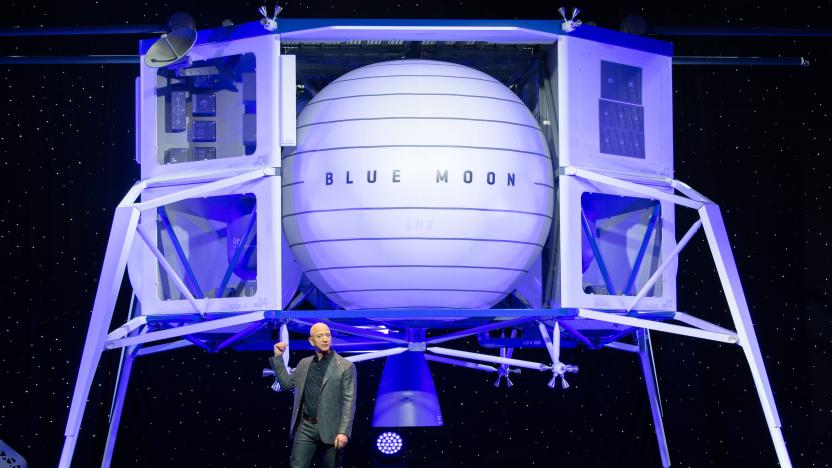
Blue Origin and SpaceX win contracts to develop NASA's Moon spacecraft
Blue Origin and SpaceX are two of three companies that won NASA contracts for spacecraft key to the Artemis Moon mission.
Jon Fingas04.30.2020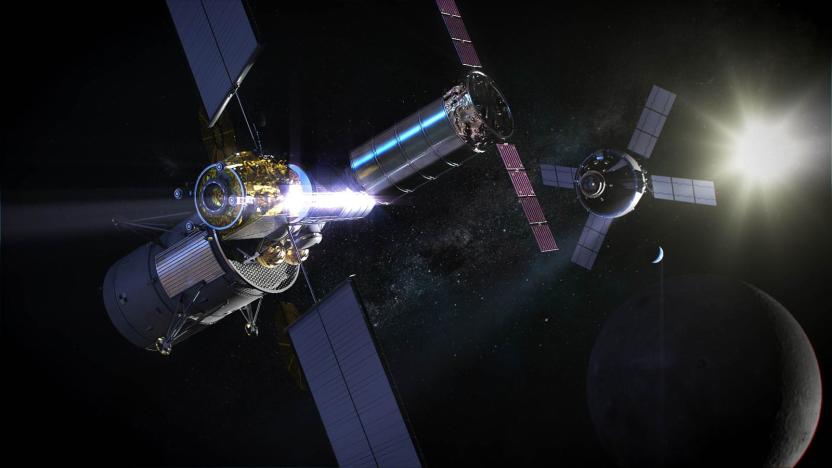
NASA warns Moon base plans might slip by a year
NASA's dreams of returning to the Moon with a permanent presence might have been overly ambitious. The agency's human exploration lead, Doug Loverro, has warned that plans for the lunar Gateway could be set back by a year or more as NASA reworks its design and intended uses. Earlier in the week, he also told an advisory committee that costs and technical challenges would force NASA to revise and streamline its objectives for the Moon.
Jon Fingas03.15.2020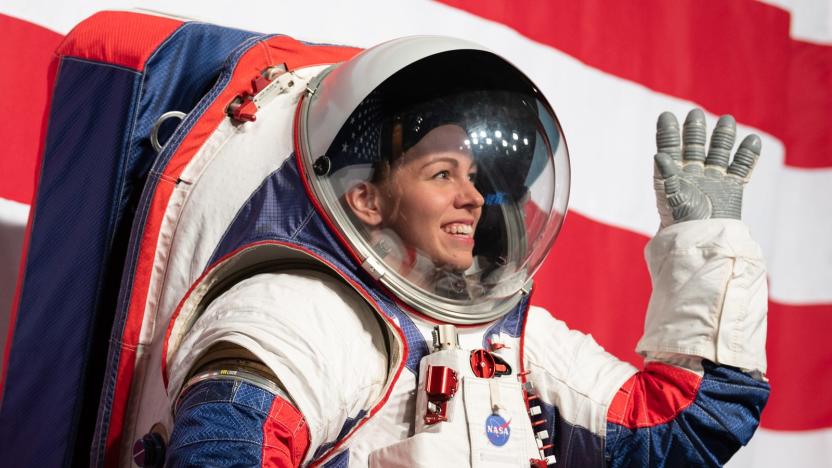
NASA accepts applications for astronauts for the first time in four years
Want to be one of the earlier astronauts to return to the Moon or explore Mars? You now have your chance. NASA has started taking applications for its next round of astronauts, some of them likely to be part of future Moon and Mars expeditions. You'll have until the very end of the month (March 31st at 11:59PM Eastern) to apply, although time isn't the main constraint here -- qualifying is.
Jon Fingas03.02.2020
NASA wants students' help designing tech for the Moon and Mars
NASA is enlisting whatever help it can get to make sure its crewed Moon and Mars missions go smoothly, and that might include help from schools. The agency is running a new round of its Moon to Mars Exploration Systems and Habitation Academic Innovation Challenge (M2M X-Hab if you want a much shorter name) that encourages university students to study and develop spacefaring tech. The challenge will reward work on habitation, vehicles, robotic advance missions, "foundational systems" (think autonomous mission tech and remote manufacturing) and human spaceflight architecture focused on the lunar Gateway.
Jon Fingas03.01.2020
Rocket Lab will launch a NASA cubesat to the Moon
Rocket Lab will fulfill its dreams of launching payloads to the Moon. NASA has picked Rocket Lab to carry its CAPSTONE (Cislunar Autonomous Positioning System Technology Operations and Navigation Experiment) cubesat into the Moon's orbit in early 2021. An Electron rocket will launch from NASA's Wallops facility in Virginia, with the Photon platform sending CAPSTONE into a trans-lunar injection. The cubesat will only handle the last stage, when it propels itself into a cislunar orbit.
Jon Fingas02.16.2020
Trump's next budget could give NASA a huge funding windfall
If NASA is going to fulfill its goal of returning to the Moon by 2024, it's going to need a lot of money in very short order -- and that might be forthcoming. The Trump administration is proposing one of the largest NASA budgets in years as part of its latest budget, earmarking $25 billion for the space agency versus the $19 billion from the first year of the administration and $22 billion for this year. Nearly $3 billion of that would be devoted to creating the vehicles needed for the Artemis program. The budget is also poised to outline Artemis' complete costs and provide a clearer roadmap for the 2024 mission.
Jon Fingas02.07.2020
Boeing's lunar lander pitch promises 'fastest path' to the moon
Boeing wants to make one of the Artemis program lunar landers that will take humans to the surface of the moon. The aerospace company has submitted a proposal to NASA for an integrated Human Lander System (HLS), which it says will be designed to reach the moon in the "fewest steps" possible. NASA has been accepting proposals from private space corporations and is expected to choose at least two of them by January next year for development. Blue Origin announced its own take on a lander called "Blue Moon" -- which it will develop in partnership with Lockheed Martin, Northrop Grumman and Draper -- earlier this year.
Mariella Moon11.06.2019
Blue Origin teams with spaceflight veterans to complete its lunar lander
Blue Origin won't be alone in working on a crewed lunar lander that will (hopefully) participate in NASA's Artemis program. Jeff Bezos' outfit has unveiled a trio of partners that will help it complete the Human Landing System, all of which are space industry veterans. Lockheed Martin will work on the reusable Ascent Element vehicle as well as lead crewed flight ops. Northrop Grumman, meanwhile, will produce the Transfer Element that brings the landing system toward the Moon. Draper, in turn, will handle descent guidance and avionics.
Jon Fingas10.22.2019
NASA demos spacesuits for its Moon and Mars missions
Today, NASA revealed the two spacesuits that it will use for its Project Artemis. It shared a video of a spacesuit engineer wearing a bulky, red-white-and-blue suit that will be used for work on the Moon and another spacesuit engineer rocking a thinner, orange suit. The latter is what the crew will wear on their way to and from the Moon, and in the event that there's a sudden depressurization of their spacecraft, they'll be able to live inside the suit for days.
Christine Fisher10.15.2019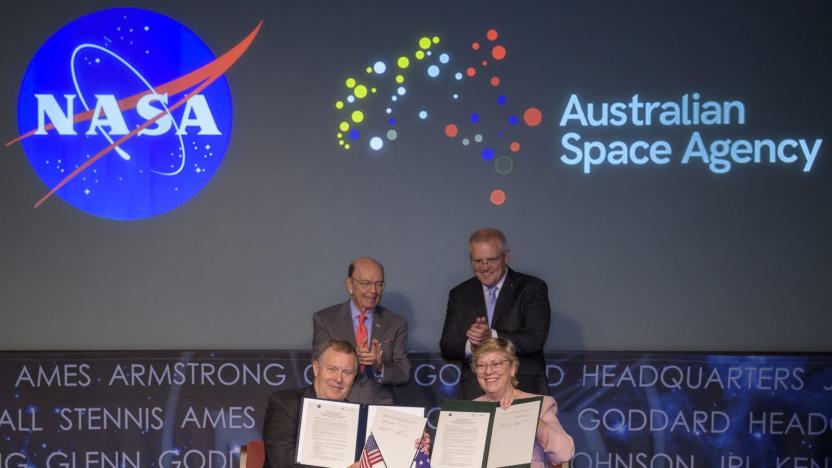
Australia will help NASA go to the Moon and Mars
The Australian government has announced that it's joining forces with NASA and supporting its exploration missions to Mars and the Moon, including the Artemis program. Under the partnership, NASA expects Australian businesses and researchers to contribute to its missions' needs when it comes to robotics, automation, remote asset management and other relevant areas.
Mariella Moon09.21.2019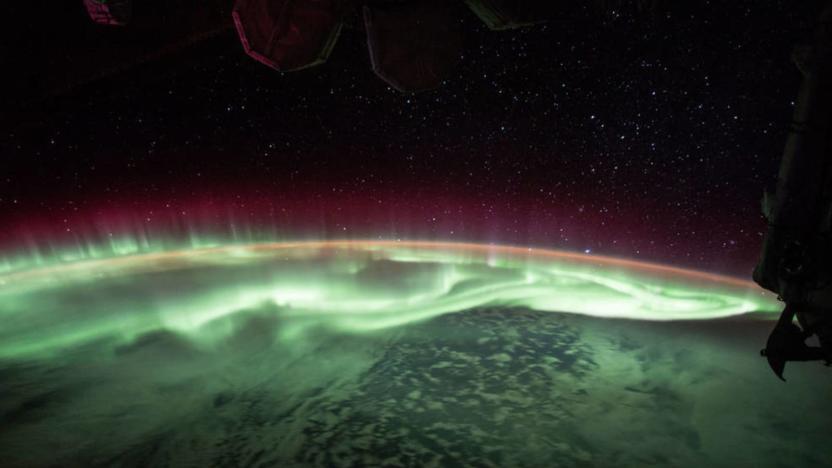
NASA ramps up its efforts to understand space weather
This week, NASA selected three proposals for missions that could help us better understand the Sun-driven space weather that occurs near Earth. Space weather, like solar flares, can impact spacecraft and astronauts, and it has the potential to disable utility grids on the ground. As NASA prepares to send more astronauts to space and we become increasingly reliant on technology, the need to protect both has become more pressing.
Christine Fisher09.04.2019